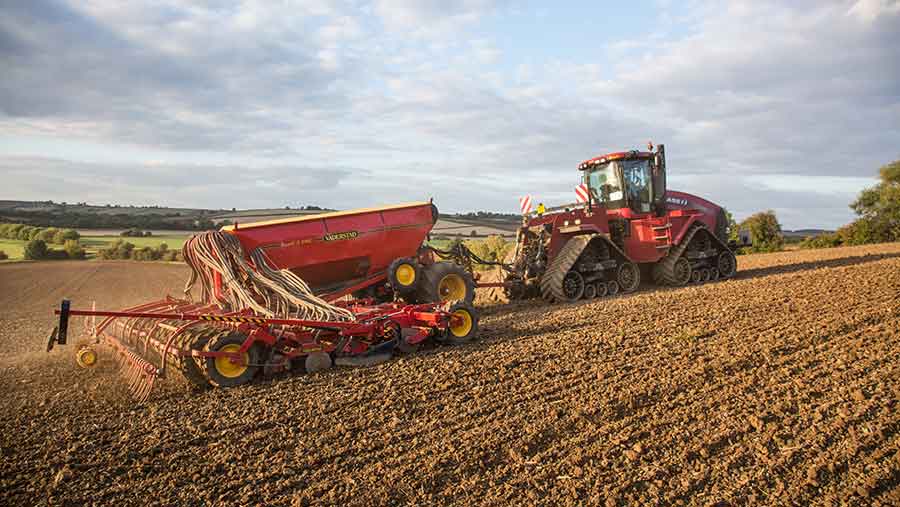3 top varieties to consider as second wheats this autumn
 © Tim Scrivener
© Tim Scrivener Gravity, Gleam and Dunston are among the top varieties cereal growers should be considering for second wheat drilling this autumn, according to an arable expert.
A number of arable growers across the UK choose to grow a second successive wheat crop, as the crop generally has a higher yield potential and disease resistance than any other cereal crop.
Last harvest, however, second wheats performed poorly and delivered disappointing results, which could mean some growers will be re-evaluating their variety choices and looking at other options.
See also: Switching barley varieties leads to better profits in Norfolk
Clare Leaman, cereal variety specialist at crop consultant Niab, said that despite limited data regarding second wheats, Gravity, Gleam and Dunston were the varieties most likely to be the top performers.
“Unfortunately, there is much less data available for second wheats, but we believe these three varieties will perform well,” she said. “The Recommended List is hugely beneficial in helping identify the characteristics of each variety.
“Having said that, there can sometimes be a big variation between the information from the list and the true reflection of on-farm performance.”
Pull of Gravity
Gravity is a relatively new variety, so the experience of growing it and subsequent data is restricted. However, early signs show that it is yielding well and has decent disease resistance.
Mrs Leaman highlighted that as a second wheat, it had been performing well in trials, had impressive yield statistics and showed reasonably good disease resistance.
One of Gravity’s drawbacks is its low rating of 4 for eyespot, a common disease among intensive cereal rotations, although figures across the board are relatively low.
Gleam is another recently established variety, which again has performed well, but with limited data available. Among its extensive attractive traits are high yield, strong disease resistance and good straw strength, with early indications suggesting it is a consistent performer.
Dunston was the third variety identified by Mrs Leaman as a second wheat. A more recognised option for growers, Dunston may not be as high-yielding as Gravity or Gleam, but has one of the highest resistances of all feed wheats to both eyespot and septoria.
Furthermore, with a figure of 77.2kg/hl, Dunston has a decent specific weight for a hard feed wheat.
Clare Leaman’s top tips for choosing varieties:
- Look at what has performed well in the past. If it’s working, why change it?
- On the other hand, it’s important to look forward and to trial and error
- If changing to a new variety, don’t put it all in. Maybe just a field or two
- Pick first wheat varieties which mitigate second wheat problems and offset risks
“Most varieties don’t differ much in terms of their performance as first or second wheat,” she said. “Dunston, however, is an exception. As a first, its ranking is well down the list, but as a second, it’s within the top 10.”
As well as these three main varieties, Kerrin and Shabras are identified as varieties that growers should consider.
Disease resistance
Mrs Leaman explained that growers now look at disease resistance as a priority when making a choice on wheat varieties.
“Disease resistance has come up the agenda massively when choosing varieties. Priorities have noticeably shifted, as it was yields which used to be very important,” she said.
Another factor identified by Mrs Leaman is consistency of performance.
“Consistency is key. If farmers can put a variety in their budget sheet, knowing what they think it will yield, and it does, that’s going to go down well.
“In some cases, farmers will now accept a slightly lower yield in exchange for consistency and no surprise results,” she said.
